
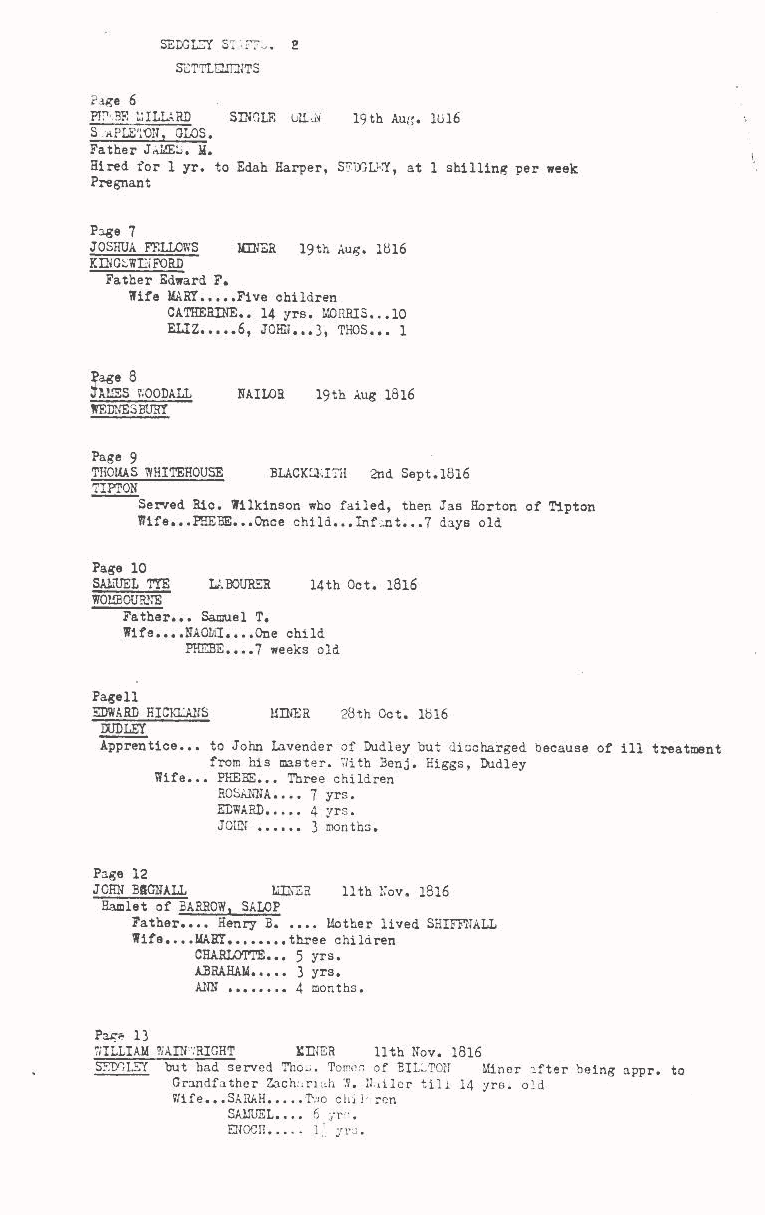



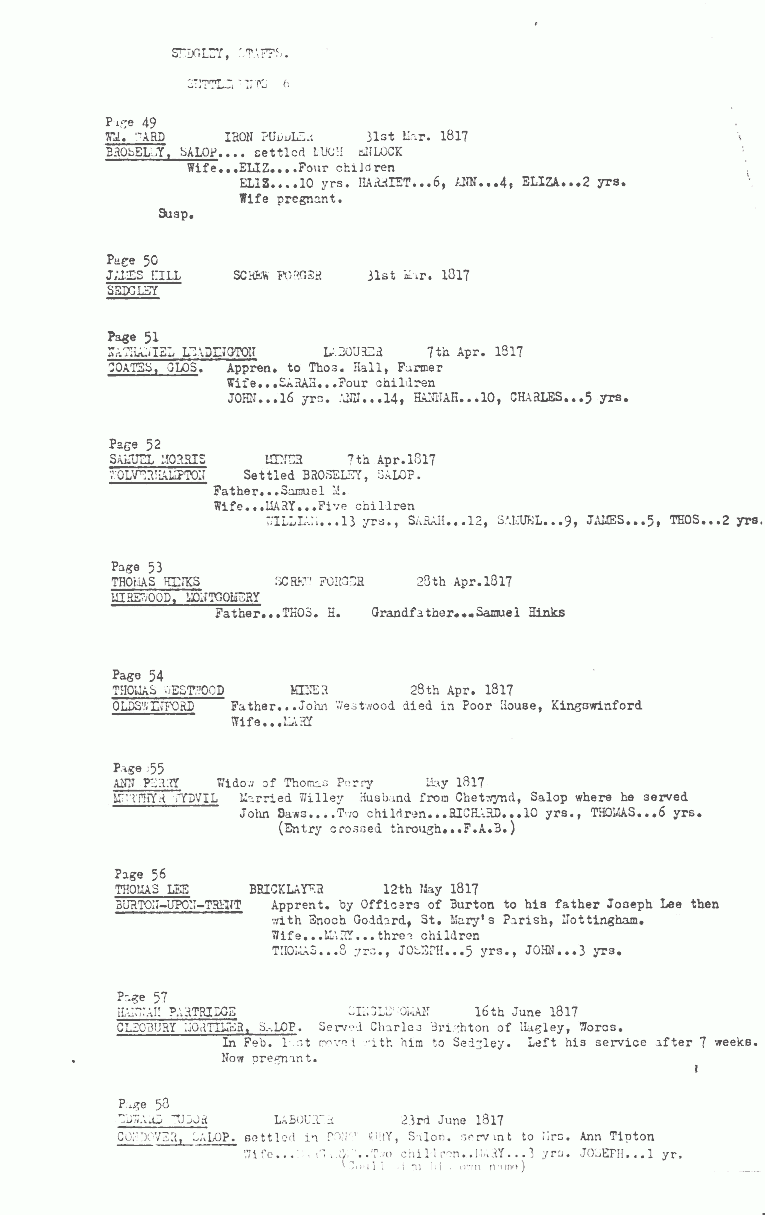

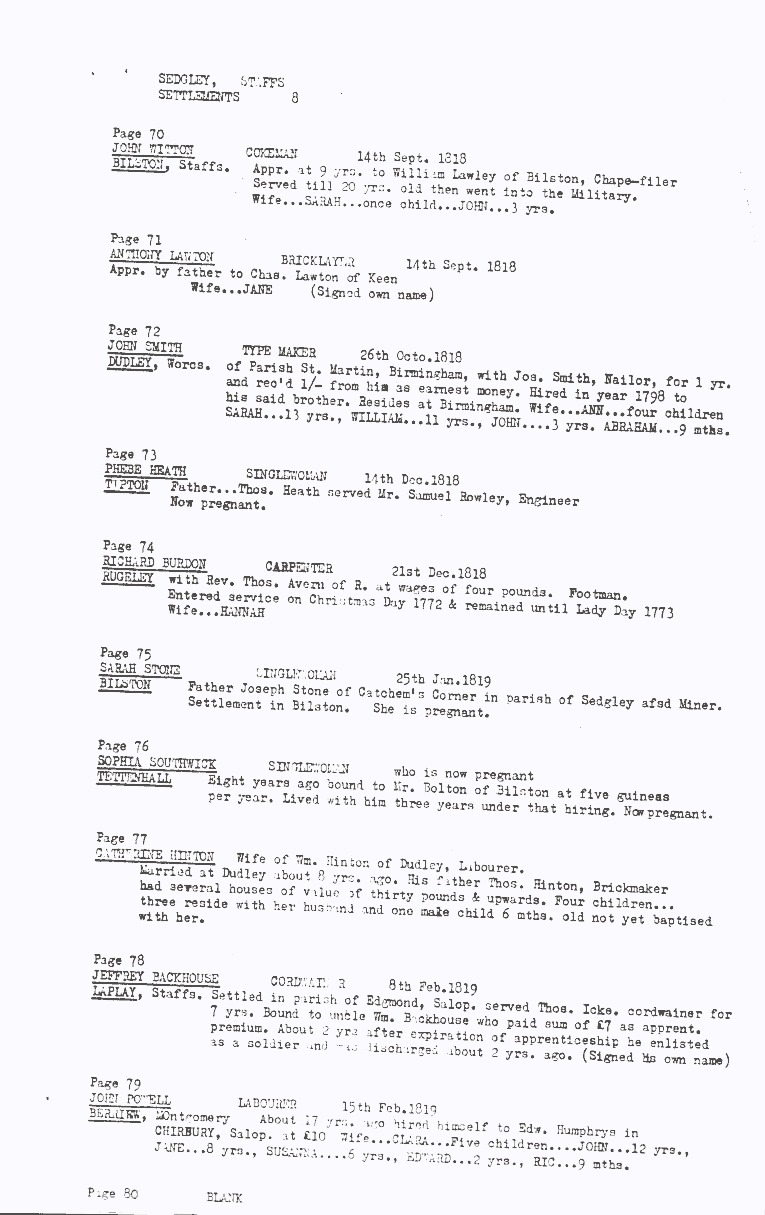
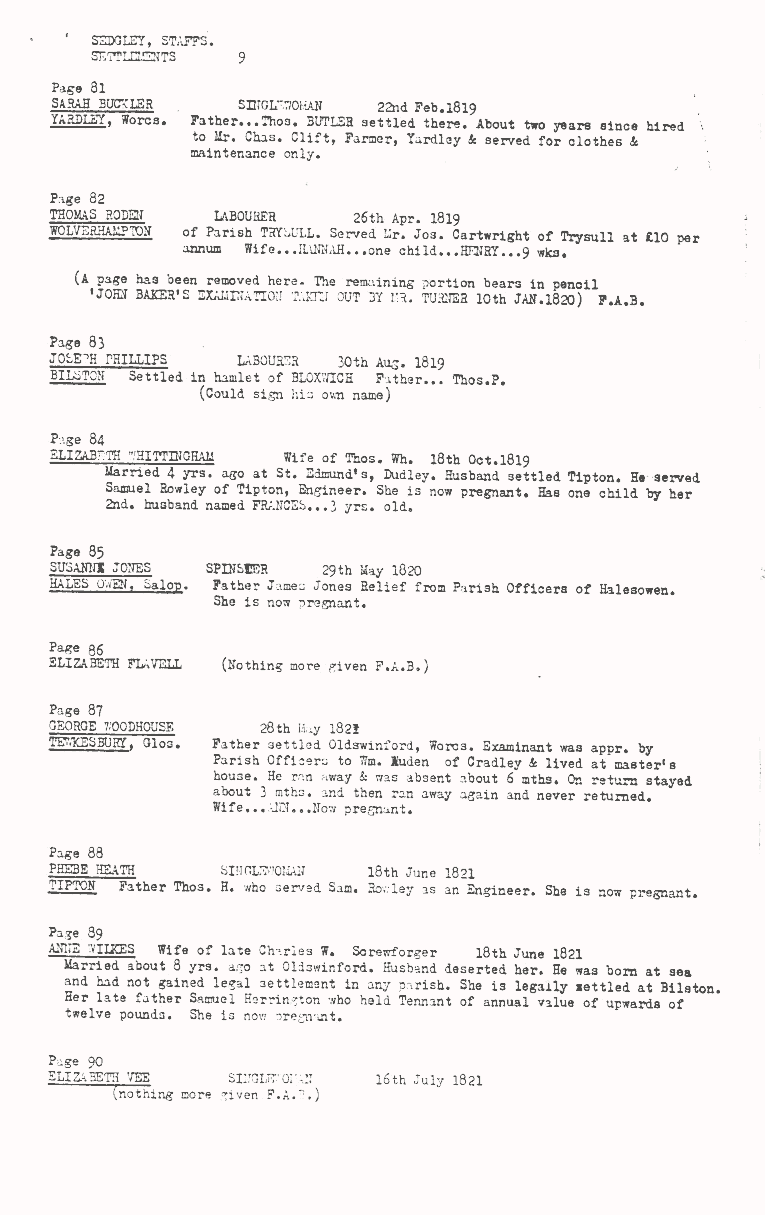



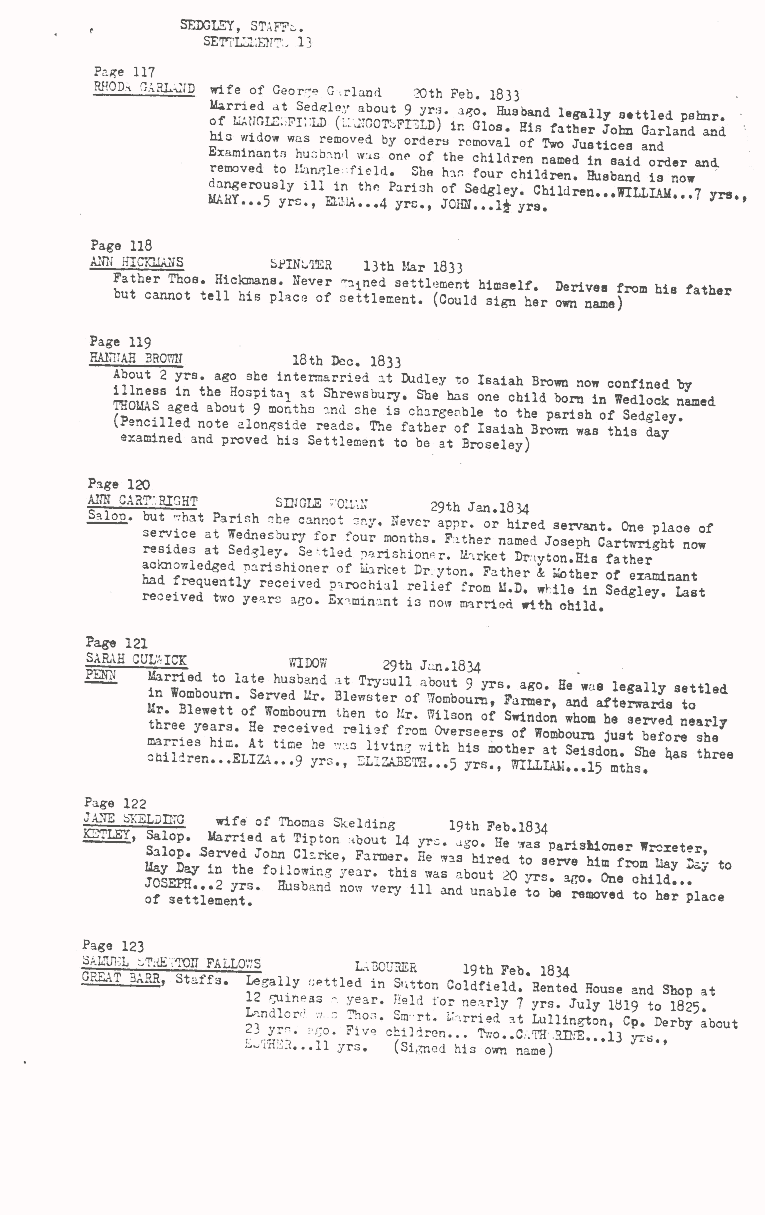





The principle on which poor relief was paid was that a parish was responsible for its own and a father for his children. To be recognised as a parish resident one of several criteria had to be fulfilled. If any person failed to establish residence they could be removed from the parish should they become unable to support themselves. This system generated considerable paperwork. When a person required poor relief or when they came into the parish and it was thought likely that at some time they might require relief, they were interviewed to establish their place of legal settlement. This produced settlement examinations which provide much information of use to family historians. Details may be given of ages, places of birth and marriage, family relationships, employment and places of residence. Settlement certificates were issued to those who wished to leave their own parish, to show that the parish would take them back if they became in need of poor relief. Removal orders made to send a poor person back to their place of settlement may also provide much of this information.
 |
 |
 |
 |
 |
 |
 |
 |
 |
 |
 |
 |
 |
 |
 |
 |
 |
| Search the whole Sedgley site |